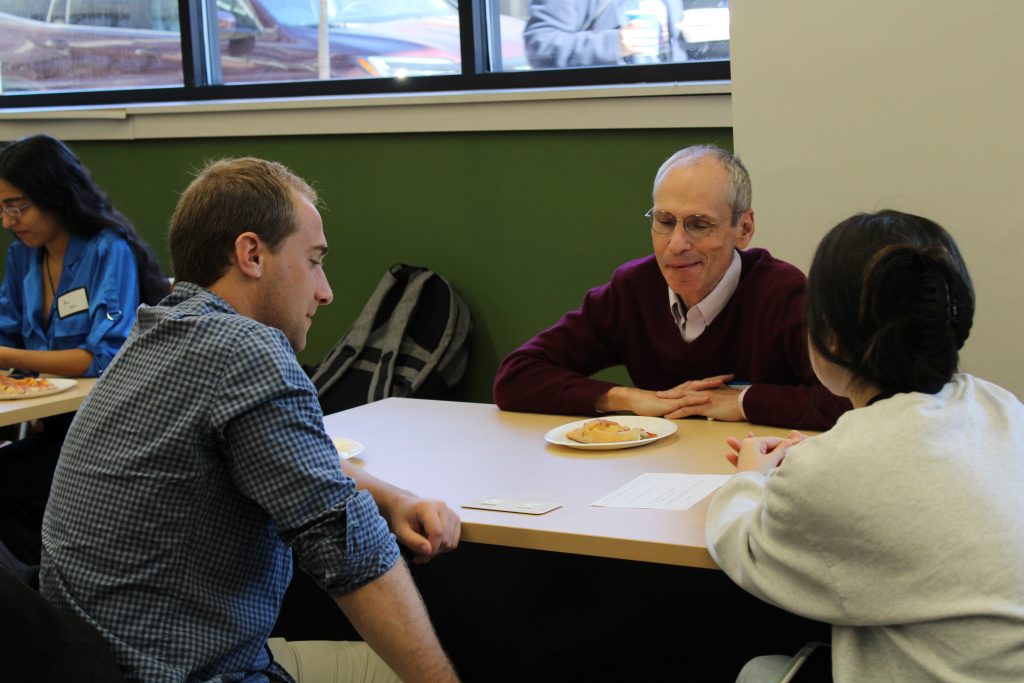
The College of Arts and Sciences had a pizza lunch kickoff meet-and-greet event for their new Undergraduate Student-Faculty Research Support Fund on Nov. 16. The event included introductions and trivia games to familiarize the students and professors with each other and the program.
This program is a new initiative introduced by the Dean of the College of Arts and Sciences David S. Brown. Before Brown came to Drexel University over a year ago, he was the department chair of the College of Arts and Sciences at the University of Colorado, where they had a program named Studio, which got students involved in research.
After coming to Drexel, Brown wanted to create a similar program and get “research into the hands of undergraduate students.”
Students who are accepted into the Research Support Fund program are paired with faculty members to assist them with ongoing research projects. This program is all about active learning and the chance for students to experience a more hands-on type of learning.
The position lasts six-months, with a commitment of three to five hours a week, in which the students will work on the project and earn $1500.
As mentioned by Brown, this program is not only a chance for students to do work for faculty, but for them to “get out there and learn the basis of how you do research.”
According to Brown, this kind of research is how “you get students excited and passionate about what they’re doing.”
With the help of the Associate Dean Scott Warnock, Professor Ashley Dickinson, and Professor Christina Love, this program was brought to life at Drexel.
In addition to the invaluable experience of working with faculty members in projects related to their field of interest, this program will also encourage students to interact with each other.
Brown describes the interconnected program as an “ecosystem.”
The program will also create opportunities to further help students by holding workshops and bringing people in to talk to students about their fields.
The program is very diverse in terms of fields of study as well as levels of undergraduate students. The entire student body of the College of Arts and Sciences, freshmen through seniors, are eligible to participate in it.
This diversity is reflected in the eleven faculty projects, which are spread out among what Warnock describes as a “really nice range,” not only of disciplines but also of “different kinds of research activities.”
According to Brown, they were very deliberate in creating a diverse program by having two of the main professors involved in creating the program representing both the natural sciences, with Love, and the social sciences with Dickinson.
The program is planned to have two cohorts each year, with applications for the second cohort of this year to open at the end of the winter term. The distant future for the program is also looking hopeful as there is a lot of interest for the program among students.
The project proved to be successful beyond imagining. According to Warnock, they had eleven faculty proposals to be matched with students and they hoped they would be able to make it to twenty student applications. Instead they received 89.
Both Brown and Warnock expressed their desire to expand the program so that more students and faculty could be part of it.
Brown said that he is now working on getting people to help provide additional resources so that they can “bring the other 70 students into the fold, which is something I’m excited about.”

